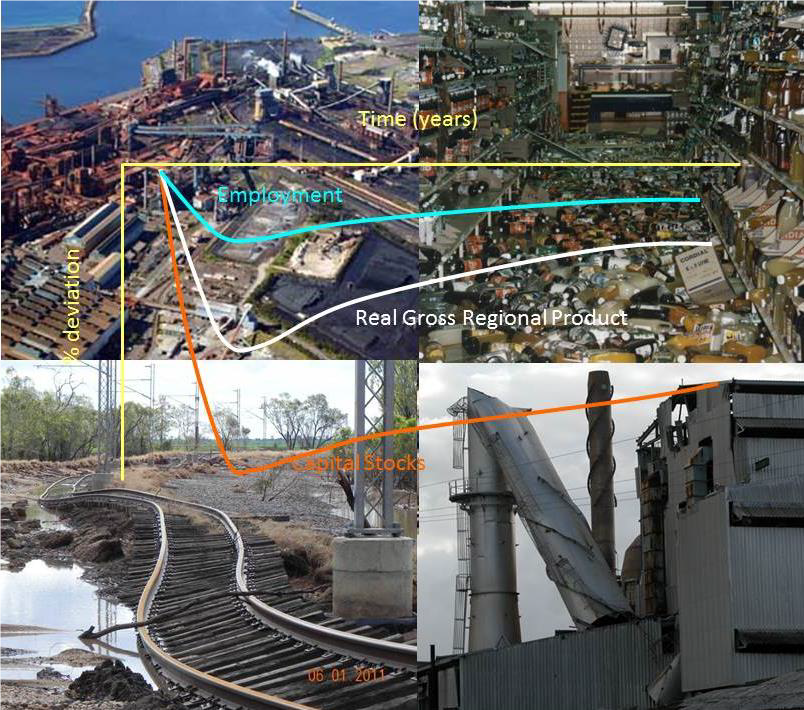
PUBLICATIONS
Published works

Business exposure information framework
| Title | Business exposure information framework |
| Publication Type | Report |
| Year of Publication | 2017 |
| Authors | Nadimpalli, K, Mohanty, I, Kalantari, M, Rajabifard, A |
| Document Number | 542 |
| Date Published | 12/2017 |
| Institution | Bushfire and Natural Hazards CRC |
| City | Melbourne |
| Report Number | 542 |
| Keywords | business exposure, disaster, framework, modelling, risk reduction |
| Abstract | Bushfire and Natural Hazards are features of the Australian climate and landscape and the threats will continue (COAG, 2011). These hazards can have profound personal, social, economic and environmental impacts. The impacts of these disasters demand the need to advance the efforts of planning, preparation, response and recovery to improve community resilience. Disaster management is a collective responsibility of all levels of government, society, businesses and individuals. For disaster resilience, emergency management planning should consider risk and risk treatments across the built, economic, social and environmental assets (COAG, 2011). Exposure “what is at risk” information is fundamental for assessing risk from natural hazards and therefore nationally consistent information is required for evidence based prioritising and targeting interventions. To address this, consistent methodologies and frameworks are required to enable information sharing and accurate interpretation. In natural hazards and disasters decision making Exposure is a key component and constitutes people, buildings, infrastructure (transport, energy, communications and water), businesses, hazardous substances, primary and major industries. This report is an outcome of research funded by Bushfire and Natural Hazards CRC to develop an “Australian Natural Hazards Business Exposure Information Framework”. The framework is aimed at supporting the development of nationally consistent and centralised business and economic exposure information to enable the decision making in disaster management to the evidence based. This research has reviewed the current literature and information providers; engaged end users and researchers for future requirements, and conducted a gap analysis. The literature review has helped to understand the relevant practices and future trends at international, national, regional and local levels. In particular, the review highlighted the business and economic exposure data requirements to enable researchers to develop models for better impact analysis. The project has conducted an on-line survey of existing exposure information capabilities in Australia to ascertain existing data and information capabilities for disaster response and recovery. Overall a lack of national consistency in existing data and information capabilities is a limiting factor in evidence based decision making. The project also conducted a Stakeholder Engagement Workshop with an aim to identify the exposure information needs of researchers and other end users in Australia. The workshop provided an opportunity for thirty six participants representing decision makers, emergency managers, planners, researchers, asset managers and the insurance sector to outline their future requirements. The collective views of data managers, researchers and end users have informed the basis for exposure information requirements to develop a consistent, standardised exposure information framework that will support vulnerability assessments for disaster risk reduction and socio-economic impact analysis. Information on some exposure elements is critical for some end users and may not be of interest for others. To reduce the complexity, the framework categorises the information provision into three levels depending on user requirements such as policy and planning; response and recovery; and research and analysis. Australian Natural Hazards Exposure Framework (ANHEF) levels and their aims, description and boundaries are outlined in Built Environment Exposure Information Framework Report. There is some fundamental information and common elements that underpins the entire exposure framework such as spatial enablement; land use categorisation; insurance status and metadata outlined in Built Environment Exposure Information Framework Report. The business exposure information framework presents the exposure elements required to develop information systems to support the impact analysis of both micro-economic (business sectors) and macro-economic (regional) for disaster risk reduction from a variety of natural hazards. The micro-economic variables considered in the framework include business entity, type, size, operations, space usage, workforce and input requirements. Whereas the macro-economic variables include the size and performance of the economy, industry sectors and labour force characteristics to assess the local economy. The document outlines a generic framework to underpin the utilisation and is focused on end user requirements. The report identifies a list of exposure elements across different components of the business and economic activity that are presented in the summary tables. |
Published Works


